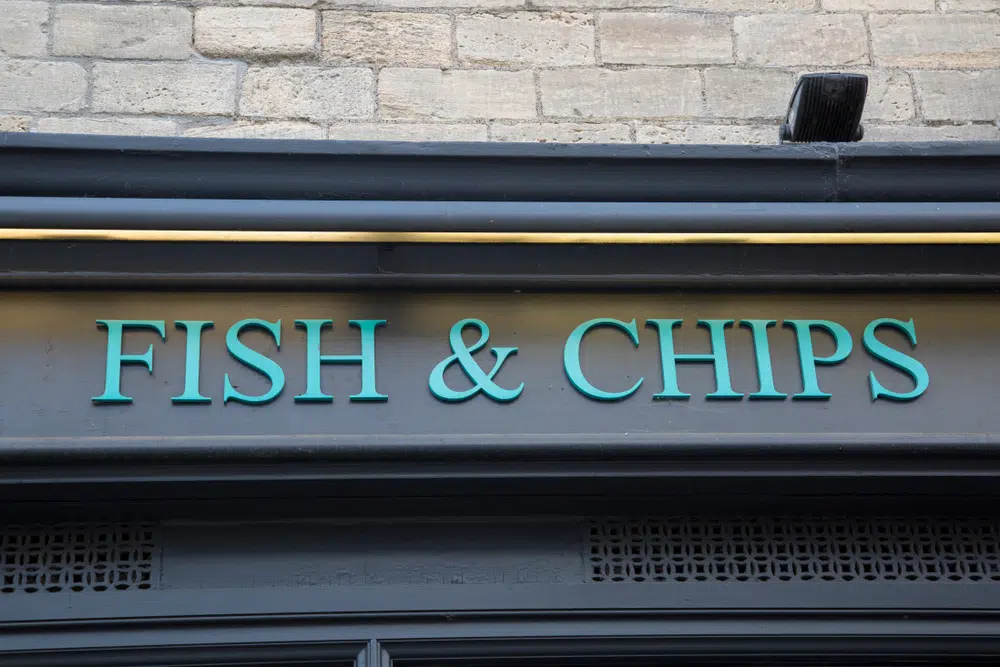 Starting a Fish & Chip shop in the UK is a venture deeply rooted in the country’s cultural heritage, with Fish & Chips being a traditional and beloved British meal. Prospective owners need to start by crafting a detailed business plan, which outlines their target audience, pricing, location, and marketing strategies.
Starting a Fish & Chip shop in the UK is a venture deeply rooted in the country’s cultural heritage, with Fish & Chips being a traditional and beloved British meal. Prospective owners need to start by crafting a detailed business plan, which outlines their target audience, pricing, location, and marketing strategies.
Location is paramount for such a venture, with seaside towns and tourist hotspots traditionally being excellent spots for a thriving Fish & Chip shop. An understanding of local regulations and health codes is vital as well, as you will need to ensure compliance in areas like food safety, waste disposal, and employment.
The business will also require an investment in necessary equipment, such as deep fryers, display counters, and potentially a restaurant POS system. Of course, the key to a successful Fish & Chip shop is offering high-quality food.
To achieve this, it’s important to source fresh, high-quality fish and potatoes, and perfect your frying technique to deliver a consistently delicious and satisfying product.
Everything you need to know about running such a venture can be found right here in this informative guide.
Should you start a fish and chip shop now?
The prospects of starting a Fish and Chip business now are just as tantalising as the menu items.
One of the major upsides is the recent uplift in takeaways and dining due to an increase in high street foot traffic as life gradually returns to normal post-Covid, providing a considerably larger customer base compared to the previous year.
A study by the British Takeaway Campaign indicates that at the peak of the pandemic, 38% of households indulged in takeaway at least once a week, with an average spend of £45 per month in 2020 – and those are just the households that confess to it.
Furthermore, SMEs can still benefit from various government support schemes, including Business Rates Relief, adding to the growing list of reasons why now could be the right time to delve into the Fish and Chip business.
Research your target market
There is a large importance placed on researching your target market and audience persona whenever you start up a new business venture. This includes the likes of fish and chip shops.
Create a business plan
Before committing to anything, you have to come up with a business plan. To do this, you can use a general business plan template and adapt it to your shop. The essential points that your plan needs to include are: –
- An introduction to the business – a mission statement, objectives, legal and capital structure
- Your USP – What is it you are going to specialize in to draw customers through your door.
- Management – establish the credibility and ability to manage
- The market – look at the target audience and the size of the market
- Competitive analysis – explore strategy, pricing and selling channels
- Operational details – essential equipment, premises, staffing, general materials
- A financial overview- sales and profit, projection, insurance and necessary funding.
Estimating the number of customers
Fish and chip shops must have lots of passing trade – known as ‘passing trade’ – to be successful.
At lunch time (between 12pm and 2pm), count the number of people walking past the proposed location of your shop. Repeat the process in the evening. Attempt to conduct this research on several different days in a week.
Who walks past your shop or near it? Do most of them work in offices, go on vacation, or go shopping? Depending on the time of day, does this change?
Consider walking or driving around the area where you plan to open your shop. Take note of what kind of buildings are in the area. Any building that will bring large numbers of potential customers to the area, such as offices, colleges, and factories, needs to be taken into consideration. Be on the lookout for apartment blocks and housing estates as well. Take note of the busiest and quietest times at nearby caravan and camp sites.
It is important to remember that areas with many offices and factories may be very busy during lunchtime but will be dead at night. Residents of residential areas may experience the opposite.
Establishing the level of competition
The next step is to determine how well your potential market is supplied after determining who your customers are and establishing your potential market.
Is there another fish and chip shop in your area? How about other fast food outlets and cafes? Do you know of any mobile takeaway businesses operating in your neighbourhood? Drive or walk around the area to find other fast food outlets within a ten-minute walk, for instance.
Get to know your competitors by making some notes. Don’t forget to include:
- Outlet type (e.g., fish and chip shop, burger bar, cafe)
- The type of food they sell – how wide is their selection
- How big are their portions? Buying a portion of fish and chips and weighing it at home is a good way to ensure your portion sizes are not too small.
- For example, whether they offer lunchtime meal deals
- When they are open
- Is it possible to eat in or only order takeout? Is their appearance smart and upmarket, or do they appear rundown and dated?
- If displayed, their hygiene rating
Observe the prices charged for certain popular items (for example, large chips, cod portions, pasties, tea, cold drinks, etc.). Take note of what types of items people buy and when – you may notice a pattern.
Make sure you are thorough. Try supermarkets, convenience stores, petrol station forecourts, and convenience stores for hot take-away food. Many pubs, cafes, and restaurants offer fish and chips on their menus. Find out which food businesses in your area offer a delivery service on the Just Eat and Deliveroo websites. You will also be competing with them.
Check TripAdvisor to see if any of your potential competitors have a listing – if they do, read their reviews and rating. You can use these to determine your competitors’ strengths and weaknesses.
It is important to remember that market research can continue for a long time. Talk to your customers once your shop opens. Find out what they like and dislike. Keep track of what items on your menu sell well and what do not. Keep your eye on sales and introduce new products from time to time.
Think about a location first
Being in the UK, you’re never more than 70 miles away from the coast (the maximum inland distance), ensuring fresh fish can be delivered anywhere within a day. However, your success isn’t guaranteed just by choosing any high street to set up shop.
Identifying the optimal location for your fish and chip shop is a critical initial step in making your business profitable and successful.
Considering Premises
You have the option to take over an existing fish and chip shop for sale, benefitting from its pre-existing clientele and equipment. Alternatively, if you’re hesitant about an outright purchase, there are numerous fish and chip shops available for rent.
Before finalising your decision, ascertain why the shop is being put up for sale. It could be a simple case of the current management seeking new opportunities, or there might be insurmountable challenges that render the shop a risky investment.
Aspects to ponder when deciding the location for your fish and chip shop include:
- Low-income area – Fish and chips, being an affordable yet tasty meal, often thrive in low-income areas. If the locale has a ready patron base with minimal competition, it could be an ideal spot.
- High-income area – People in these areas may have more disposable income but are more likely to cook at home or dine in restaurants. Nevertheless, a premium fish and chip shop could still find success.
- Mixed-income/ high footfall – Locations like town centres or bustling high streets provide maximum footfall but also command higher rent and rates. Competition may also be higher here.
Other elements to consider are:
- Proximity to competition – Being close to rivals can actually benefit a small business. Customers appreciate variety and if you offer the best amongst the choices, they’re likely to choose you. Strategically utilise competitors to highlight your superior offerings.
- Cleanliness/ maintenance – Look out for signs of dampness or pests and ensure the property is well-maintained. Although you can clean some issues, recurring ones might be costly and challenging to manage.
- Reputation – Investigate customer reviews of the shop you plan to acquire before making a commitment. A poor local reputation will require significant effort to turn around.
Should you buy a leasehold or freehold fish and chip shop?
For aspiring fish and chip shop proprietors, both leasehold and freehold provide valid routes to ownership. Let’s delve into the nuances and practicalities of each:
Leasehold
A leasehold property offers temporary ownership, reverting back to the landlord when the lease expires. The lease agreement will specify conditions such as the need for permission to modify the property and the party responsible for maintenance and repairs.
A leasehold entails a smaller investment, offering a suitable entry point for newcomers to the fish and chip shop business. Ensure you fully comprehend the contract before signing it.
Securing a long lease can facilitate future selling, and the option to purchase the freehold might present itself down the line if your circumstances allow.
Freehold
Owning a freehold gives you total control over your fish and chip shop business, encompassing property alterations, maintenance, and repairs. This provides you with the liberty to mould your business to your liking, but it requires substantial capital.
Securing a desirable freehold business in a prime town centre location will be costly. However, possessing a fixed asset makes it easier to secure a bank loan.
Decide what to sell
Knowing exactly what you are going to sell is obviously an important part of running any food-based business venture in the UK. However, you may benefit from thinking outside of the box a little bit when running a fish and chips shop.
Eat-in or takeaway
Whether to sell meals for eat-in or take-out is an important decision. If you want to offer eat-in options, you will need more space. As well as extra staff, you will probably need to hire more.
How big will your menu be
There are some traditional chip shops that specialise in fish and chips, along with mushy peas and other alternatives to fish such as pies and sausages. Choose from a variety of fish – favourites include:
- Cod
- Hake
- Plaice
- Haddock
In England and Wales, cod is the most popular choice, while haddock is more popular in Scotland.
It is important to keep in mind that customers are increasingly concerned about eating fish that is protected or sustainably sourced.
Huss (also known as rock salmon or dogfish), pollack, hoki, ling, squid, and salmon may also be served. Scampi and calamari (squid) are popular on chip shop menus in some areas, as well as battered cod’s roe.
In addition to chips, you might also serve pies, pasties, rissoles, fish cakes, sausage rolls, and sausages.
Other dishes may be served as well. Chip shops sometimes now even serve the likes of pizzas, kebabs, burgers, jacket potatoes, hotdogs, soups, and deep-fried chicken pieces. There are some chip shops that offer vegetarian products, such as veggie burgers, cheese and onion pasties, and mushroom pies. As well as fish and chips, you can also find curries and Chinese dishes. Depending on the type of food you are serving, you may need additional equipment.
Consider whether you will sell enough items to justify the initial investment and whether you have the space for this.
In addition to small items, you might also sell alcoholic beverages, cakes, and confectionery, as well as pickled eggs and sauce portions.
Don’t forget to think about the portion sizes of your fish and chips too – many chip shops serve large and regular portions. Today, less fattening meals are under a lot of pressure. People trying to lose weight will find fish and chips less calorific if the chips are cut in size. To make family dining more affordable, consider offering children’s portions. People who want to eat something on-the-go might find it helpful to offer easy-to-handle snacks like fish goujons.
Estimating the average ‘spend’
Estimate the number of items each customer might typically purchase when working out your cash sales. Observe what other fish and chip shops are doing as part of your market research. As a result, you will be able to determine what the average ‘spend’ is in your business.
Opening hours
The hours of your business will need to be decided.
When to open
For most fish and chip shops, lunch time and early evening are the busiest times. There may be a steady trickle of demand throughout the day if your shop is located in a tourist area or in a busy shopping centre. Your business may experience little or no demand between traditional mealtimes if most of your customers are nearby office workers or factory workers.
When there is a demand for takeaway food and fish and chips, keep your shop open at all times. Depending on your business model, you may decide to open only between 11.30am and 3.00pm and again between 5.00pm and 10.00pm. Alternatively, you could stay open all day.
Your hours of operation could be extended by offering breakfast, or by staying open late to cater to nearby after-pub patrons.
You will have many tasks to complete each day – cleaning your equipment, preparing fish, mixing batter, peeling potatoes, etc. When the shop is closed, you can do these, but if you want to keep the store open for long hours every day, you may have to hire extra staff.
You will probably open six or seven days a week, depending on demand, since Fridays and Saturdays are the most popular days for eating fish and chips. It may not make sense to open your shop on Sundays if it is located in a shopping centre, for example (although Sunday trading is becoming more prevalent).
Seasonal factors
When opening a store in a tourist region, it may not be worth it to open during the winter. There is also the option of opening during the winter but reducing your business hours. During the spring and summer, you’ll probably be open long hours every day to compensate for the quiet winter season.
Financing your fish and chip shop
Establishing a fish and chip shop requires capital. While some entrepreneurs might be starting their business with personal savings, many often seek additional funds. Thankfully, several financing options are available:
- Startup loans – The Startup Loan Company offers a government-backed scheme where you can borrow up to £25,000 at a fixed interest rate of 6% p.a.
- Business loans – These loans are akin to startup loans but cater to all businesses, not just startups, and they don’t have the same borrowing limits. Use our comparison tool to find a loan provider that aligns with your requirements.
Furthermore, managing your finances effectively is crucial. Utilising a business bank account to segregate your personal and business expenses and revenue is considered best practice.
Buy an existing business
An existing fish and chip shop might be more cost-effective than starting one from scratch. When you buy a going concern, you already have products, customers, regular sales, staff, premises, and equipment.
There are also the following matters to consider:
- There can be a lot of difficulty in improving a bad reputation (check any TripAdvisor reviews as well) if the business has a food hygiene rating.
If you do not have the right skills and experience on your team, including legal and financial expertise, buying a business can be a hazardous, expensive process. In order to avoid overpaying for a business, establish the genuine trading and financial position.
Franchises
It is also possible to acquire a franchise rather than start your own business from scratch. Fish and chip shops offer several franchise opportunities. Franchises allow you to run your own business while benefiting from well established brands and formats. Franchises also offer useful services, such as business support. The franchisor, however, will charge you a franchise fee for all this.
Compare the terms of different franchisors before entering into a franchise agreement to make sure you’re getting a good deal. Before signing anything, consult your solicitor.
Jarred Musson is a versatile writer with a diverse educational background and a passion for all things business. Holding a Master of Science (MSc) degree in Marketing and a Bachelor of Arts (BA Hons) in Multimedia Journalism from Manchester Metropolitan University, Jarred possesses a unique blend of expertise that allows him to dissect and communicate complex business topics with clarity and precision.


